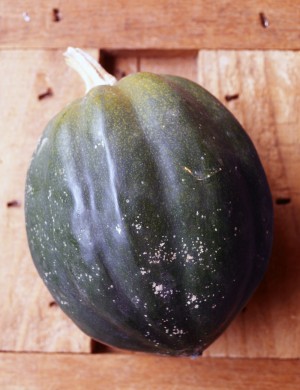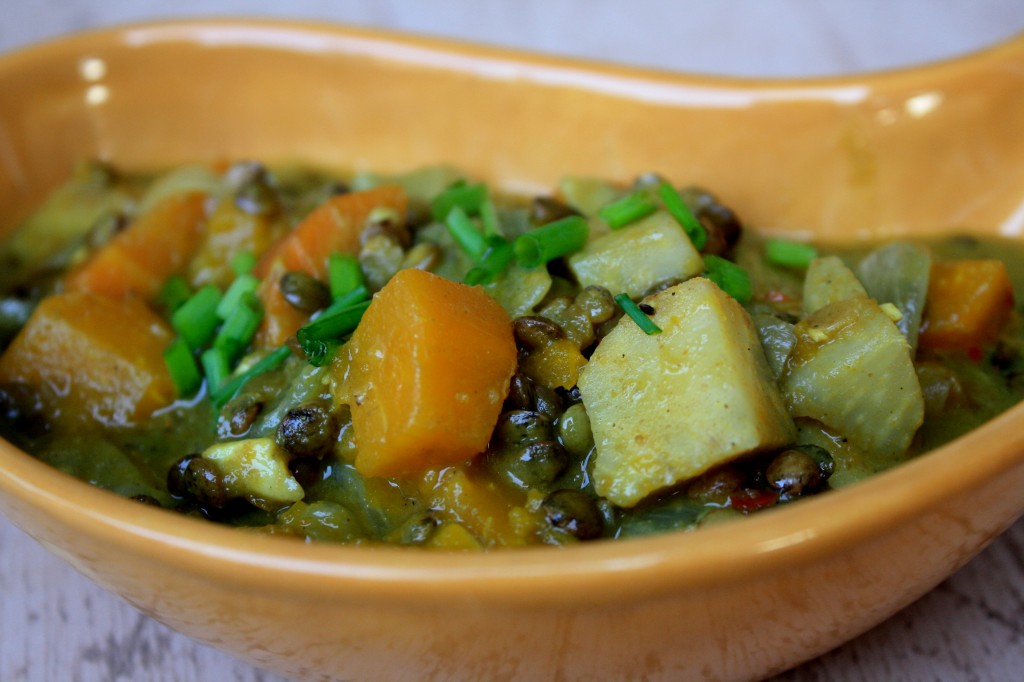01 Oct Herbed Acorn Squash & Quinoa Risotto
 Autumn has arrived at Blooming Glen Farm, as noted most deliciously by the lovely winter squashes making an appearance in our shares over the last couple weeks. Autumn-time squashes, including acorn, kabocha, delicata, butternut, and sweet dumpling, are high in fiber, vitamin C, potassium and manganese (which helps or bodies absorb nutrients). They also provide vitamins A and B6, thiamin and magnesium (good for maintaining healthy blood pressure). All this nutrition is delivered in a sweet-tasting package that is low in calories, carbs and cholesterol!
Autumn has arrived at Blooming Glen Farm, as noted most deliciously by the lovely winter squashes making an appearance in our shares over the last couple weeks. Autumn-time squashes, including acorn, kabocha, delicata, butternut, and sweet dumpling, are high in fiber, vitamin C, potassium and manganese (which helps or bodies absorb nutrients). They also provide vitamins A and B6, thiamin and magnesium (good for maintaining healthy blood pressure). All this nutrition is delivered in a sweet-tasting package that is low in calories, carbs and cholesterol!
The recipe below uses health-boosting acorn squash along with super grain, quinoa — which isn’t really a grain at all, but a seed. Quinoa is known for its nutrient density; most notably, it offers plant-based, complete protein, meaning that it has all of the essential amino acids the human body needs. Cooked risotto-style with a generous helping of herbs de provence, the dish below makes a savory side, perfect for fall.
Herbed Acorn Squash & Quinoa Risotto
Ingredients
2 tbs Earth Balance, divided
salt
1 acorn squash
1+ cup chopped onion (I used 2 small onions from the share)
1-1/2 tbs herbs de provence
1 cup uncooked quinoa
4 cups No-Chicken broth (or sub veggie broth)
1/4 cup nutritional yeast, optional (or sub Parmesan cheese)
Method
Cut squash in half, lengthwise, and scoop out seeds and pulp with a spoon. Peel the skin off with a peeler and then cut squash into small cubes. Melt butter in a skillet over medium heat. Add squash in a single layer, sprinkle with salt, and let cook for 5 minutes. Stir squash and cook until tender, about 10 more minutes, stirring occasionally.
Meanwhile, melt remaining butter in a large skillet, and add onions and sauté until tender, about 3 minutes. Stir in herbs and cook for a minute. Stir in quinoa and cook 3 minutes. Turn up heat to medium-high and add 1-1/2 cup of the broth, bring to a simmer, stirring often, until the broth is absorbed. Add broth like this, 1/2-to-1 cup at a time, until the quinoa becomes creamy and the germs have burst. This should take about 20-25 minutes. Stir in nutritional yeast, and then gently stir in squash. Salt and pepper to taste.
Post and photos by Mikaela D. Martin: Blooming Glen CSA member since 2005, board-certified health counselor, and co-founder of Guidance for Growing, an integrative wellness practice in Souderton. Read more about healthy eating and living on her site, http://guidanceforgrowing.com!











